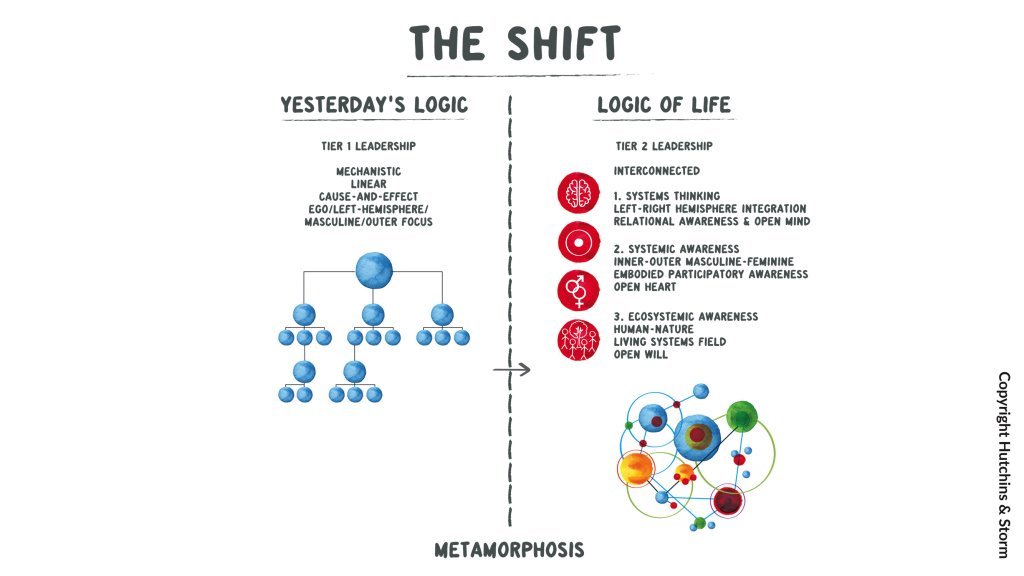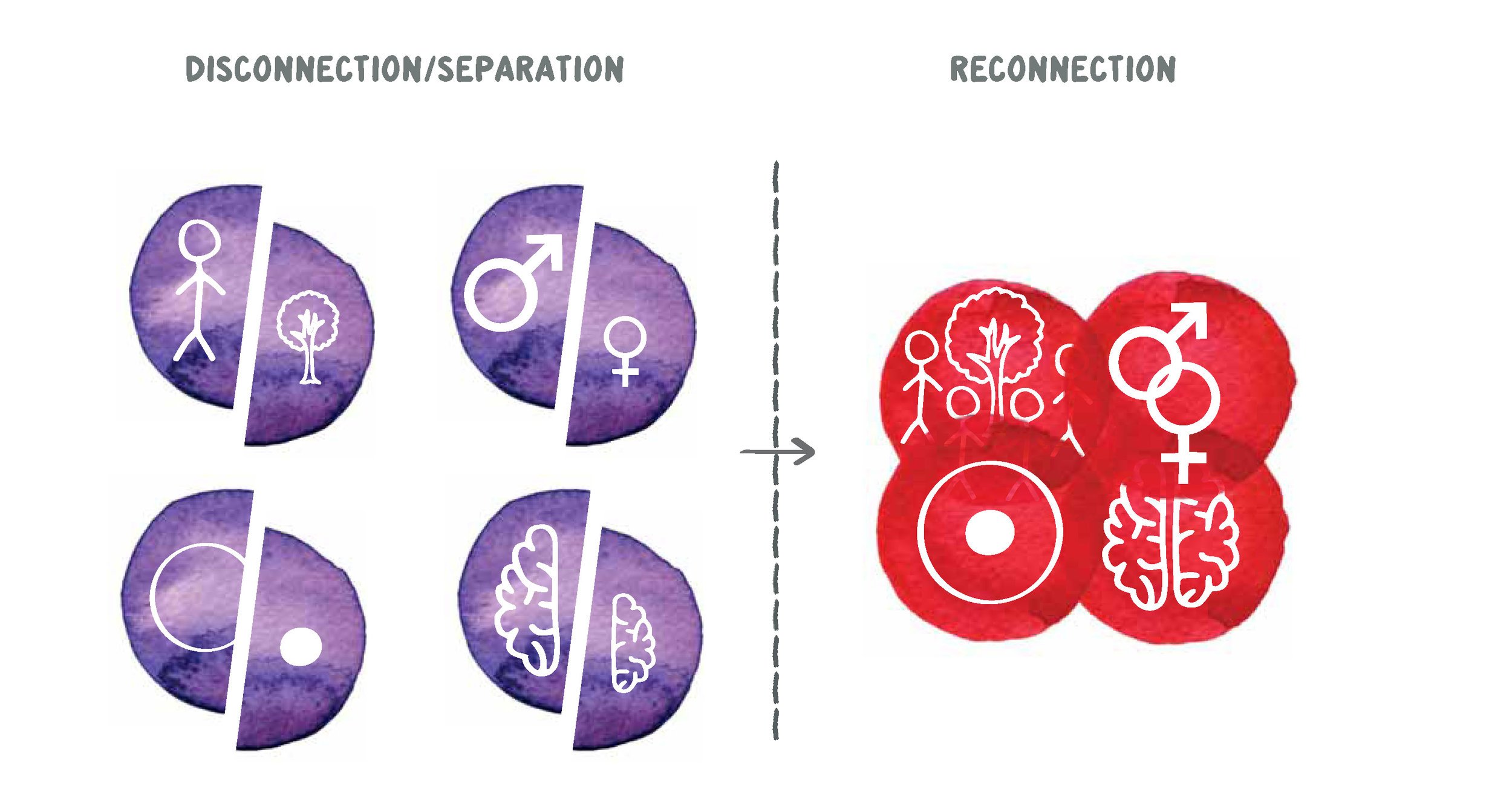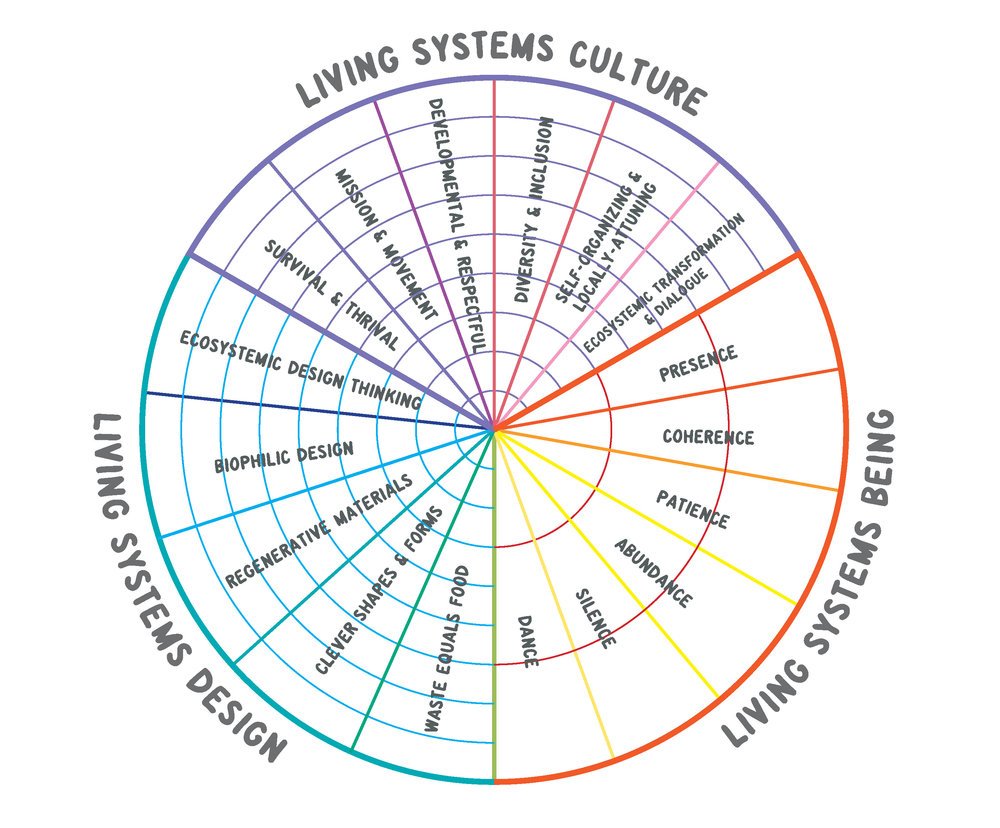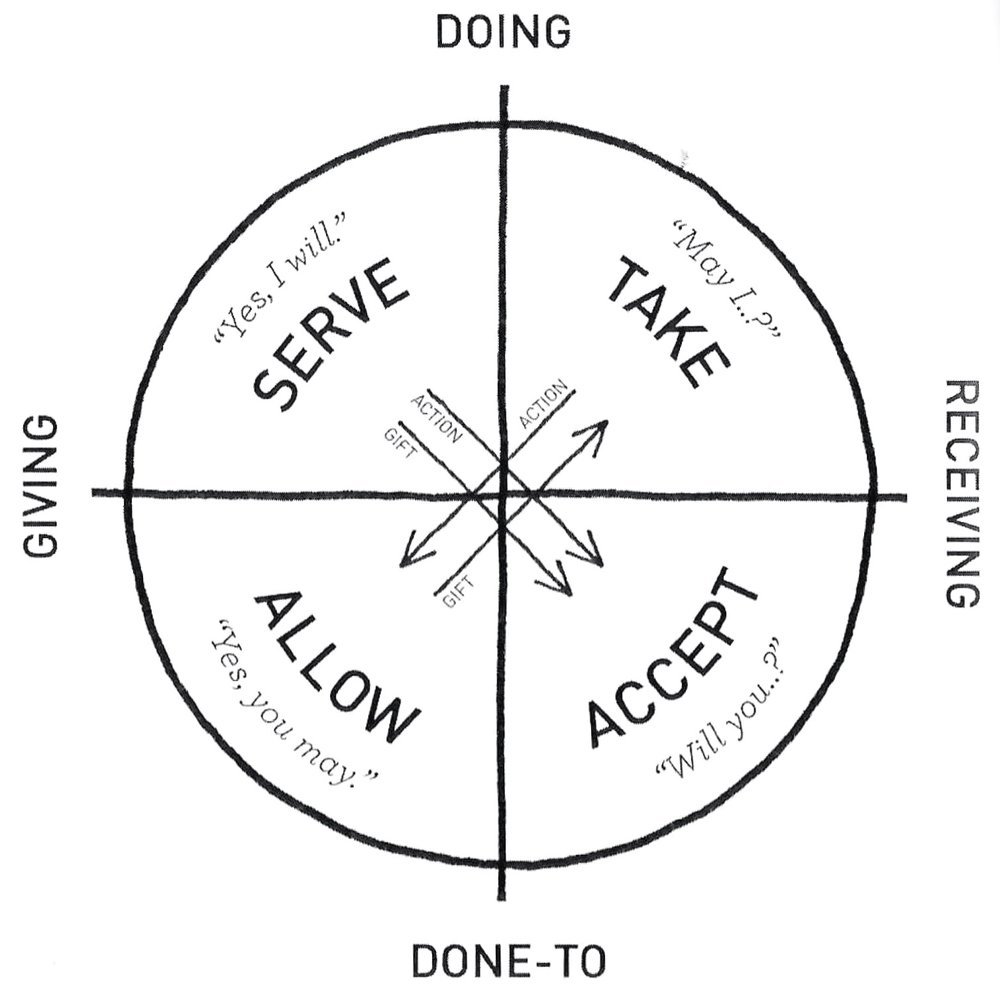Love & Right Relation
To love someone is to see staggering beauty within them even when they can’t see it themself.
We can never really know someone, we can only assume from what we see of and hear from them who they might be.
We experience others through the filters of our own perception. Thus the love we have for someone isn’t because of who that person really is, it’s because of our ability to see incredible beauty within them.
Your ability to love someone is a reflection of who you are. That love is yours, it is you, it is of you. Love cannot be given nor taken away by others. It is a melody that plays ad infinitum within our hearts and resonates harmonically when we are inspired by what we see in others, even when it’s not really there. But our ability to see that means that we recognize an attribute within them, and that means that we already understand and know that particular attribute, as it has already existed within us for us to know.
How could you recognize something you don’t already know?
The beauty you see in others is a reflection of yourself.
In the words of business mentor and life coach Simone Grace Seol, “We have experiences of ourselves and put other people’s faces on them.”
Nothing externally has any meaning other than that which we give it, and we can only assign meanings to things when those meanings already exist within us.
When we think someone is beautiful, we’re seeing in them beauty that already lives within us.
When we find someone inspiring, we are inspiring ourselves and then saying that someone else did it for us.
Beauty is in the eye of the beholder. They couldn’t be beautiful or inspiring without your witnessing and recognition of them being so, without that beauty and inspiration existing within you to recognize.
It sparks jealousy and hopelessness and dangerous idealization/disappointment when we project meanings on others and expect them to spark that same meaning within you whenever you observe them.
Others are not responsible for the judgements you make about who they are, and your experience and perception of them is not their responsibility.
When we romanticize life and the people around us, it can be devastating when our own fantasies (reflections of ourselves) turn out to have little reflection of the truth.
Big Heart Syndrome
“You think everyone is like you. They’re not.” - Chimamanda Ngozi Adichie
“When someone shows you who they are, believe them the first time.” - Maya Angelou
But love is blind, isn’t it?
I call it “big heart syndrome” where one sees only goodness and fails to anticipate or recognize evil because it is foreign to them.
As someone who would never intentionally do someone else harm, when someone intentionally harms me, I find it hard to believe, impossible to empathize or take the perspective of a person who would do that, so I am very easy to write something off as unintentional or even as my own fault, forgiving them instantaneously because I can’t fathom a person who would hurt someone intentionally.
But people who intentionally do harm take this as an opportunity, seeing a kind person as a perfect target for mistreatment because it will go right over their head and they’ll stick around even though they should have left ages ago, because they are just too forgiving, loving, and naive not to. “Big heart syndrome” keeps us in cycles of abuse.
As someone who was regularly gaslit as a child, often told that my perception of events was warped when I would point out actions of neglect or abuse, I began to distrust my own alarm system, and that led to many more unhealthy relationships in which I didn’t trust my own impulses to run away.
In my recent article on “coming home to your body” I mentioned how we are neurally and somatically wired as children to adapt to our childhood environment, and subsequently feel the most certainty in similar circumstances later in life due to their familiarity. Because we were initially trained to navigate that kind of context, later on it is the situation we feel the most secure in knowing how to navigate, even though it may not be healthy or safe for us.
I noticed that I kept running into a familiar pattern until I began doing massive work shifting my own neural pathways and moving somatic energies through spirituality, plant medicine, Tantra, breathwork, and conscious movement. After releasing many of the beliefs and traumas that held me in abusive patterns, I was able to find my center and feel more grounded and powerful in my relationships with others.
Relating Consciously
A core tennet of Native American culture is the concept of Right Relation. According to Together Bay Area, a regional coalition for healthy lands, people, and communities in the Bay Area, right relation is:
“To embody respect and reciprocity in order to foster healthy relationships with our plant, animal and human relatives. It means to move through the world with an awareness of your impact on the communities and ecosystems with which you share the Earth.”
To practice right relation is to practice awareness of the interrelatedness and interconnectedness of all expressions of life, energy, and matter.
According to Regenerative Leadership by Giles Hutchins, 500 years ago, there was a cold spell, a miniature ice age, that caused famine, death, and disease for the people living in that time. Those people suddenly became distrustful and fearful of nature, and since then we as a species have sought to conquer, control, and exploit the Earth for our own gains. We see this in the oppression of nature, women, and indigenous peoples through colonization, social stratification, individualism, and exploitative economic activities. Prolific and influential thought leader of the time, René Descartes, saw human beings as separate and superior to nature and other forms of life, seeing them all as mindless machines to be mastered and exploited at will. Anyone close to nature, like women and indigenous peoples, were treated in the very same way.
Through this disconnection with nature, we began to feel a fissure within ourselves, separated from our innate oneness and wholeness with all else, trading in the magic of the incomprehensible quantum field of interrelationship for the broken, lonely, dog-eat-dog construction of reality that is separation and hierarchy, using each other and our natural systems for personal gain at the expense of others rather than working together with our natural systems to create sustainable, regenerative solutions for natural abundance and peace for all.
It may take quite a bit of doing to come back home to our oneness as a planetary ecosystem, but some fantastic first steps are to begin to find wholeness within ourselves and to relate more consciously with the people around us.
Regenerative Leadership Diagrams:



Finding Your Center
All relationships are relationships we are having with ourself. As stated before, all of the experiences we have of others are creations made from the lens of our own perceptions and preexisting notions. When we are triggered or reactive, when we assume the best or the worst in someone, when we are replicating unhealthy, neutral, or healthy patterns of relating, that is all our creative power.
I remember writing letter after letter to a past lover of mine for years until I finally realized I was just writing to myself. When we seek relationship with another person, sometimes it’s because of a reciprocal spark of connection, and sometimes it’s because we want something; certainty, comfort, pleasure, validation, security, care, attention, etc. If a relationship is transactional or codependent, it means that each party is getting something out of the relationship that would be missing if they were to separate. If it’s the rapturous joy of being together because you love each other, that’s one thing, but if it is something you feel is missing within you that you feel you need them to achieve, then that is a dependence, not a relationship. If you are simply using them to gain something, that is a transaction, not a relationship.
Finding wholeness and abundance within oneself is a very important step in any act of relation. For example, when we feel insecure, we may lose ourselves in trying to find validation in another, or if we feel lonely, we may simply keep someone around rather than let them find someone who really loves them because we haven’t done the work to be comfortable in joyful, abundant aloneness. Thus our relationships with others are often colored completely by the state of our relationship with ourselves.
Practices to Find Wholeness
In meditation, yoga, Tantra, and conscious movement practices, I became much more familiar with my energetic self, finding my unique, fluid resonant signature, feeling my powerful aura, the floating point of awareness that I really am flowing wherever I point my attention. I began to feel into the discomfort I once had around others and allow myself the compassion to accept my trauma-related hesitance to be fully open, to not allow my fear to control how I respond to others, to always choose, from a grounded center, how I wished to feel and act in each moment in relation to others, without fear or judgment.
A practice like meditation gives us more patience, thoughtfulness, empathy, and response time to consciously decide our next action. Relaxation in any capacity is also helpful in making us less reactive, but meditation is a more powerful and pervasive aide in this endeavor.
Tantra is a powerful set of teachings about consciously relating to others. It is about exploring the sacred divinity of “self” and “other” within the greater “oneness.” Everything is the universe expressing itself from different perspectives, all to be honored and respected as such.
In Tantra practices we learn to see that the person over there is just us in another place, another form. All of our needs, boundaries, preferences, and desires are valid and they should be honored. For example, if someone desires to hold your hand but you don’t wish to, it is integral to communicate clearly both parties’ desires and boundaries until there is an understanding that is favored by both. No one’s desires should overrule another’s boundaries. This is a way to honor people and to keep them safe. When there is a context of respect and open, healthy communication, there is greater relaxation, comfort, and connection between individuals to explore their relationships safely, peacefully, and joyfully. The more we communicate, the better we understand each other and can create beautiful experiences with one another.
When someone is whole within themselves, they see someone else’s boundaries as that person’s boundaries, not as a rejection or humiliation, and find ways to respect and honor themselves and the other person in their subsequent actions.
Non-Violent Communication
After finding one’s energetic center and capacity to respond consciously in relation to others, the next important step for growth in relating is to communicate in healthy, safe, and effective ways.
While honoring the possible differing perspectives we may have with others, we can communicate and listen to one another’s observations, feelings, needs, and requests honoring both experiences and finding ways to honestly and directly find common understandings.
From Non-Violent Communication:
From Tantra:
In the tantric “wheel of consent” there are four types of people in consensual interactions:
The server says, “Yes, I will do this for you.” The action is done by the server but they are giving to the acceptor.
The taker says, “May I do this to you?” The action is done by the taker but they are receiving from the allower.
The allower who says, “yes, you may do this to me.” The action is done to the allower but they are giving to the taker.
The acceptor who says, “Will you do this for me?” The action is done to the acceptor and they are receiving from the server.
If the potential server says no, the action should not be completed.
If the potential allower says no, the action should not be completed.
If at any moment either party in an interaction would no longer wish to continue, the action should not continue.
In these diagrams you can see helpful ways to communicate and receive messages from one another that honors both experiences of being. In nonviolent communication, there is a focus not to blame or criticize the other person, instead to express one’s experience and then to receive that experience with empathic attention, back and forth.
It’s very important not to assume anything about someone else when interaction with them. We can’t read each other’s minds and we won’t always know how another person would feel in any interaction unless we open a clear line of communication to seek to understand each other. I also find it helpful to verbalize myself with others to find out what I want if I’m initially unclear. The important thing is honoring each other and not making assumptions, blaming, or criticizing.
When we don’t feel whole within ourselves, we may hear an expression and react with defense, attack, blame, or invalidation.
If someone is unwilling to communicate respectfully and instead launches into defense, attack, or the invalidation of your experience when you attempt to express your feelings, thoughts, boundaries, and requests, they are simply not yet in a stage of growth that is conducive to safe and healthy relating. It doesn’t mean they are a bad person, but it does mean that it’s best to keep your distance from them as much as you can or ask for help from someone else you trust to mediate or remove you from being around that person until that person can learn and grow and treat you with the respect and honor you deserve. If that never happens, it’s best to just move on as best you can and find healthier communicators to interact with.
An exception to this is if the person experiences triggers and launches into reactivity unconsciously but at some point comes back to neutral and is once again receptive to communicating. Creating a safe space for the expression of emotion is important, and it’s also important for everyone in the interaction to be safe. We mess up sometimes, and it’s important to communicate and commit to being honoring, respectful, and loving towards each other even when we have our unconscious, overly emotional moments that are a part of the messy process of life and healing.
I had a lot of relational trauma from my childhood and adolescence, and it took a lot of inner work and good people for me to realize that there was nothing inherently wrong with me that made a few people treat me poorly, it was just that many people in this world aren’t taught how to respect and honor themselves and each other properly, and I just happened to know and love them at low points in their journeys of growth. Now, I am very grateful to know and love them from afar and I appreciate the pain I went through when I was younger because it led me to this beautiful journey of discovery. For other relationships, the ones in which they are willing to communicate in healthy ways and honor my boundaries, I’ve seen a lot of positive growth in them dissolving their trauma-related reactivity and it’s been beautiful to witness.
When we are not whole within ourselves, we may believe we deserve mistreatment, may be out of touch with or afraid to express ourselves, and may hide or self-isolate to avoid possible conflict.
When I learned how to respect and honor myself, realized that all relationships were really with myself, and found my center, all my relational issues fell away. When I have an awkward interaction, I smile and laugh and move through it with grace and compassion. When I come across aggression, I transmute it with empathy and compassion. When I feel I am not honored and respected, I walk away. I am there for myself and love myself regardless, and I know there are so many beautiful souls that love me and are there for me now and more that will love me and will be there for me in the future. I don’t need them to, but I’m also happy to love and be there for them, too.
Although we will never be perfect, and we all make mistakes, we can practice coming back to ourselves and back to this integral aspect of relating which is respecting and honoring all expressions of the universe as you from other perspectives. This means being understanding and compassionate to yourself and to others by asking thoughtful questions with nonjudgmental attention. We are one, may we flourish together.

